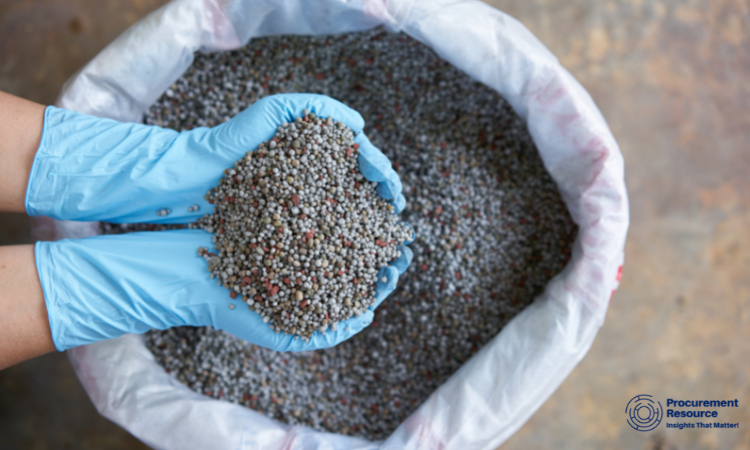Caprolactam Production Cost Analysis with Various Industry Aspects

Caprolactam price
In the following blog, an in-depth analysis of Caprolactam is given, including its definition, wide usage in the manufacturing of Nylon 6 filament, fibre, and plastics, along with its production and price analysis. In addition, the industry’s key players and recent advancements are also mentioned in the blog.
Caprolactam: Defined, Explained, and Analysed
Caprolactam is a solution that appears to be clear to milky white-coloured and has a soft, disagreeable odour. It is a crystalline cyclic amide that is soluble in water, all of the oxygenated as well as chlorinated solvents, and some hydrocarbons. It has a melting point of 70 °C. It is mainly used to produce synthetic fibres. However, its contact can lead to slight irritation and burning to the nose, throat, eyes, skin, and mucous membranes. It might be a little toxic when ingested.
The Applications Of Caprolactam Driving Its Market Growth
Caprolactam is primarily used to manufacture Nylon 6 filament, fibre, and plastics, which is driving its market growth. Furthermore, the market is propelling forward due to the growing demand for textiles and carpets. As Caprolactam monomer is used to produce the chemical fibre Nylon 6, it is widely used to create non-woven fabrics in the textile industry. This fabric made up of nylon 6 has various properties, like being colourful, lightweight, solid and durable, along with being easily dyed, offering bright and deep shades which are gaining immense popularity among consumers and furthering its industrial demand. Furthermore, the carpet industry is one of the main downstream sectors which is advancing the material’s demand since nylon 6 offers a wide range of colours and design options to carpet manufacturers. Also, these carpets are anti-abrasion, wear and tear, crushing, and matting, which makes them last longer, further boosting the market’s growth.
Caprolactam Production Cost Study
- From Phenol: In order to produce cyclohexanone, phenol is hydrogenated, which then goes through conversion to make cyclohexane oxime using hydroxylamine. This compound, in the presence of sulfuric acid, undergoes Beckmann rearrangement in order to give out caprolactam. Around 90% of caprolactam is synthesized using this method.
- From Cyclohexane: In this process, Cyclohexane is oxidised to cyclohexanone or cyclohexanol. Further, Cyclohexanol is transformed into cyclohexanone. Then cyclohexanone is made to react with water and ammonia in order to produce caprolactam.
- From Benzene: In this method, Benzene gets hydrogenated to produce cyclohexane. Cyclohexane is then oxidised to cyclohexanol or cyclohexanone, and cyclohexanol is further transformed into cyclohexanone. Finally, cyclohexanone gets reacted with ammonia and water to give out caprolactam.
Key Players in the Caprolactam Industry
- Fibrant
- China Petrochemical Corporation (Sinopec)
- BASF SE
- Advansix Inc.
- Shandong Haili Chemical Industry Co.
Caprolactam Price Trend
North America
Recently, the Caprolactam price moved in the upward direction for the initial two months, then dropped in North America. In spite of the declines in feedstock price, the Caprolactam cost will likely trend because of restricted availability and ongoing orders from the downstream sectors. As per the market players, most buyers were on a demand basis. During December, the Caprolactam cost was reduced due to the ample supply available in the regional market. Furthermore, the festive season came lowering demand further along with orders from consumers. Additionally, regional consumers displayed a wait-and-buy sentiment as inflation approached.
APAC
At present, the Caprolactam price lowered in Asia. The downstream business interests were a high and low stock of the market product, lowering prices for the commodity. In addition, the cost of feedstock Cyclohexanone and upstream Benzene declined in Asia, aiding the prices of the downstream industries. The downstream Nylon market stayed bearish, and the industry drove below. Further, the product’s inventory in the domestic market was elevated, and the rate of operation for Nylon 6 textile filament has decreased consistently in certain Chinese plants. Simultaneously, in India, the constant stock from traders and availability of surplus lowered the product’s expense. As the year-end approached, the market saw a decline in orders from downstream industries.
Europe
The Caprolactam cost in Europe grew during the first two months however dipped in the last months. There were disruptions in the supply chain because of the cargo bunching and port congestions in the region. Additionally, the elevated prices of energy in the market in Europe were caused by the increased operational cost of the product’s production. During December, the downstream industry demand was frail, and the buyers were hesitant to purchase the product caused by the region’s looming recession and inflation. Due to the lower demand, the manufacturers decreased the rate of production for Caprolactam in the region. Also, the upstream prices of Benzene dipped and aided the downstream derivative industries in the Eurozone.
Recent Development in the Industry
Commercial Production Of Sustainable Nylon Tire Cord Fabric Began By Century Enka
Century Enka has developed a new and sustainable material that will be used by Apollo Tyres for specific ranges in various segments. In addition, for the first time, Century Enka launched the commercial production of NTCF (nylon tire cord fabric) composed of 100% recycled nylon waste.
NTCF was introduced in November last year in Gujarat, India, at the Century Enka Bharuch plant when the commercial supplies first consignment was dispatched to Apollo. Both companies collaborated on this project for more than a year.
Century Enka is the most significant customer of caprolactam in India and produces in-process waste while making polyamide yarn. This waste gets recycled further, turning into caprolactam, which undergoes extensive distillation to turn into an adequate material which is ideal for NTCF production.
The managing director of Century Enka, Suresh Sodani, stated that they chose to use their in-house waste for caprolactam along with their Akzo technology which could convert some of the waste back into caprolactam. The vision behind this was to save crude oil, which is a natural resource available in limited amounts, in order to make virgin caprolactam and dodge the misusage of polyamide waste which can harm the environment. He continued by saying that he is proud of the team’s exceptional achievement.





